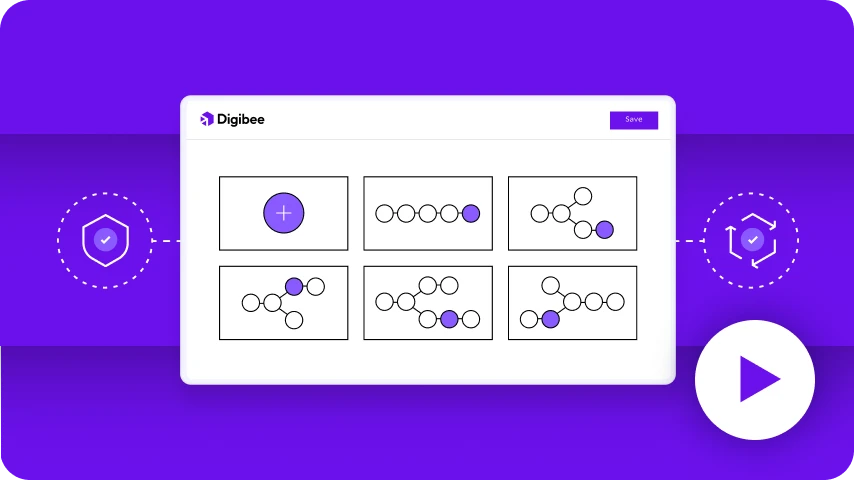
Digibee pesquisado mais de mil profissionais de TI corporativos para fornecer insights sobre seus padrões de integração, desafios e oportunidades. Aqui está o que encontramos.

Digibee pesquisado mais de mil profissionais de TI corporativos para fornecer insights sobre seus padrões de integração, desafios e oportunidades. Aqui está o que encontramos.
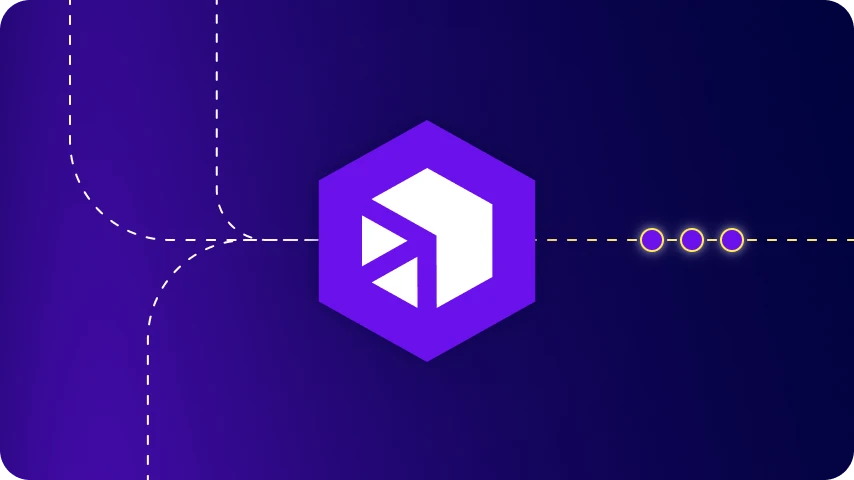
Uma vez considerado um obstáculo para o desenvolvimento de software, o low-code era visto como um estilo rígido e template de codificação que dificultava a criatividade.
Hoje, muitos engenheiros e desenvolvedores de software veem o low-code como um libertador, quase como a IA do desenvolvimento de software. Ele automatiza etapas mundanas enquanto libera o capital humano para focar em tarefas de maior valor.
Uma plataforma de integração low-code permite que as empresas ampliem e complementem suas equipes existentes, facilitando a automação, reduzindo erros e, em última análise, elevando o papel do desenvolvedor de software ao de um inovador.
Neste post, focamos em como as plataformas de integração low-code contribuem para uma empresa ágil e progressiva, por que as empresas estão adotando essa metodologia e os benefícios gerais que o negócio – e os desenvolvedores – alcançam com um modelo low-code.
>> Agende uma demonstração personalizada com nossa equipe de especialistas e veja como o iPaaS da Digibee trará eficiência ao seu negócio.

Low-code é uma metodologia de desenvolvimento que utiliza codificação visual em vez de codificação textual. Em vez de um ambiente técnico, o low-code é orientado por modelos, usando uma interface de arrastar e soltar que é acessível a uma gama mais ampla de desenvolvedores. Especialmente para membros de equipe mais juniores, que ainda podem não ter a experiência necessária para produzir em um ambiente altamente técnico.
As organizações se beneficiam de maior produtividade, redução de custos e maior agilidade. Esses são resultados significativos, refletidos nas previsões de analistas da indústria, que preveem que o mercado mundial de tecnologias low-code crescerá 20% em 2023.
As plataformas de integração low-code entregam velocidade e automação, mantendo a capacidade dos desenvolvedores de personalizar, transformar e orquestrar processos de negócios de ponta a ponta. Quando uma plataforma de integração low-code tem a capacidade de lidar com a complexidade de ambientes verdadeiramente empresariais, o resultado é uma democratização das tarefas entre as equipes de desenvolvimento, que tradicionalmente estariam sobrecarregadas com especialistas em integração trabalhando além de sua capacidade pessoal.
Agilizar a conclusão de projetos chave é fundamental para a inovação e o crescimento. Para alcançar esses resultados, os ciclos de desenvolvimento precisam ser estratégicos e previsíveis, ao mesmo tempo em que entregam resultados digitais aos clientes e parceiros dentro de um ecossistema em constante evolução.
Devido a restrições de recursos, complexidade de processos/sistemas e um ecossistema em constante evolução, muitos projetos chave acabam sendo relegados ao backlog de TIO resultado é um atraso doloroso entre a empresa determinar o que precisa para ter sucesso e a rapidez com que a equipe de desenvolvimento conseguirá entregar.
Uma metodologia de integração low-code permite que as empresas segmentem o trabalho do backlog de TI, encurtando os prazos de projeto ao atribuir tarefas mais simples a trabalhadores com menos experiência. Em vez de projetos importantes ficarem parados em uma lista de tarefas em crescimento constante, as iniciativas são concluídas rapidamente. Mais mãos resultam em trabalho mais rápido, com pessoas experientes focando exclusivamente nas tarefas de maior valor.
As empresas devem eliminar tarefas redundantes e demoradas, liberando espaço para focar em atividades de maior valor que atendam às necessidades individuais e às necessidades do negócio.
– Peter Kreslins, CTO e co-fundador da Digibee
A crescente entrega de projetos chave impulsiona os resultados do negócio. Esses resultados incluem a entrega previsível e estratégica de resultados digitais para clientes e parceiros em um ecossistema em constante evolução.
A pressão para entregar resultados está mais alta do que nunca, e essa demanda frequentemente recai sobre o backlog de projetos de TI. Não é segredo que o backlog de TI está crescendo devido a restrições de recursos, complexidade de processos / sistemas e a mudança exponencial do ecossistema digital.
Essas complexidades podem fazer com que iniciativas importantes de negócios demorem demais e consumam tantos recursos que outros projetos importantes precisem ser deixados de lado.
Uma metodologia low-code abre espaço para esses projetos que historicamente perderam prioridade, enquanto prepara sua empresa para o futuro de um aumento certo na quantidade de dados gerados e consumidos pela organização.
A priorização dos projetos do backlog de TI depende unicamente do tempo e dos recursos disponíveis para realizar o trabalho de codificação. Isso envolve os membros da equipe escrevendo, testando, depurando, implantando e gerenciando ambientes (de teste e produção).
Quanto mais codificação for necessária, maior a probabilidade de surgirem problemas, especialmente se a equipe estiver com poucos recursos ou sem a qualificação necessária. Como resultado, a data de entrega do projeto é adiada, o que atrasa os resultados positivos que ele deveria trazer. O que acontece então? Perda de receita e oportunidades de negócios.
Um modelo de integração low-code acelera o processo de desenvolvimento, simplificando o trabalho e permitindo que a equipe de desenvolvimento entregue projetos críticos de inovação no prazo e dentro do orçamento.
Aqui estão alguns exemplos das vantagens que uma plataforma de integração low-code oferece aos desenvolvedores:
As plataformas de integração low-code oferecem agilidade nos processos e segurança aprimorada, enquanto aceleram os ciclos de entrega, tudo com um custo total de propriedade mais baixo.
Nossos clientes dependem da tecnologia de plataforma como serviço (iPaaS) de integração low-code da Digibee para:
Compartilhe conosco seu cenário de uso de integração e agende uma demonstração sem compromisso para saber como você pode aproveitar nosso iPaaS low-code para aumentar a eficiência, produtividade e lucratividade.

Discutindo a função de gerente de produtos técnicos e o significado da integração no espaço bancário de varejo com o especialista em gerenciamento de produtos Matt Anderson.
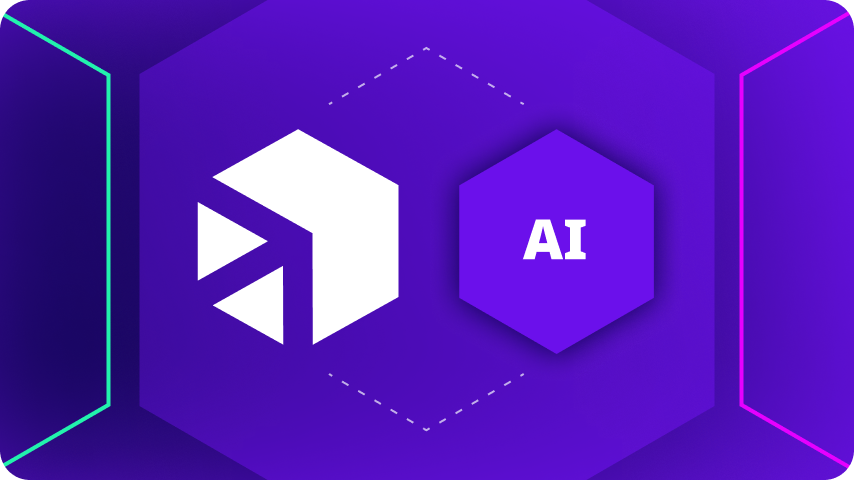
A inovação está no topo das prioridades da Digibee. Afinal, nossa missão é apoiar nossos clientes em suas jornadas de transformação digital, então é natural que a Digibee também evolua nessa direção.
Com alguns dos talentos mais brilhantes do setor, nossa equipe na Digibee possui uma curiosidade insaciável e um desejo inerente de melhorar continuamente a maneira como as empresas integram e inovam. Nossas melhores ideias nascem do entendimento do que é necessário e do que está por vir. E, então, as colocamos em prática.
Um exemplo disso é o Digibee AI Assistant, uma nova funcionalidade em nosso portal de treinamento para clientes: o Digibee Academy 2.0. A tecnologia é única e movida por IA, projetada para responder perguntas em tempo real de clientes que buscam informações.
Esse tem sido um projeto empolgante, e estamos felizes em compartilhá-lo com nossos clientes! A seguir, explicamos mais sobre como a Digibee usará a IA, hoje e no futuro, para apoiar nossos clientes e avançar nossa tecnologia.
>> Agende uma demonstração personalizada com nossa equipe de especialistas e veja como o iPaaS da Digibee trará eficiência ao seu negócio.
Na Digibee, acreditamos em empoderar nossos usuários e colaboradores para que alcancem seu verdadeiro potencial.
Temos muito orgulho de quão intuitiva é a plataforma de arrastar e soltar da Digibee, permitindo que Solution Engineers aprendam e utilizem o iPaaS com rapidez, tornando-se proficientes na criação, execução e monitoramento de integrações. Contudo, estamos sempre em busca de aproveitar as melhores tecnologias e ideias para aprimorar continuamente a experiência do usuário.
Os avanços que estamos alcançando com a IA tornam mais fácil para todos encontrarem as informações de que precisam em tempo real. Ela também nos fornece insights importantes para entender melhor as necessidades de nossos usuários, ajudando a informar como melhoramos e evoluímos a plataforma Digibee.
Há vantagens de curto e longo prazo para nossos clientes no uso de nossa plataforma, e nosso iPaaS evoluirá com base no que aprendemos, tanto diretamente de nossos usuários quanto no que podemos obter da IA.
Ao contrário de muitos fornecedores de tecnologia de integração, o modelo de suporte da Digibee – incluindo a Academy e nosso AI Assistant – é fornecido gratuitamente. Nossos clientes não deveriam ter que pagar para aprender. E embora nosso suporte seja gratuito, nossos clientes realmente experimentam o benefício de nossa plataforma quando as rodinhas de treinamento são retiradas, fornecendo aos desenvolvedores e arquitetos total autonomia.
A transformação da percepção da integração como um inibidor do crescimento para sua utilização como um facilitador da inovação rápida está totalmente concretizada.
O futuro promete grandes avanços! A IA nos oferece uma variedade de oportunidades para aprimorar a experiência dos clientes da Digibee e inovar ainda mais a nossa tecnologia iPaaS.
Na implementação da Digibee Academy 2.0, formamos uma equipe ad hoc multifuncional composta por profissionais de diferentes áreas da organização, com habilidades em ciência de dados, em sua maioria da equipe de Educação. Com base no sucesso alcançado até agora, estamos considerando a criação de uma função ou equipe formal para apoiar o desenvolvimento contínuo e a entrega de funcionalidades impulsionadas por IA.
Com a Digibee Academy, o modelo evoluirá além do formato de perguntas e respostas para oferecer recomendações de conteúdo proativas com base nas necessidades individuais de cada usuário. O sistema também avaliará tarefas e fornecerá feedback personalizado aos usuários que utilizam nosso modelo de treinamento de autoatendimento.
Além da implementação atual, estamos investigando a aplicação de IA no iPaaS da Digibee. A equipe está explorando ativamente uma experiência de usuário baseada em conversação e outras capacidades com IA, incluindo melhorias para a criação e manutenção de pipelines, fornecimento de recomendações inteligentes e automação de tarefas e processos para todos os usuários.
Hoje, estamos testando ativamente o sistema internamente na Digibee. O Assistente de IA fornecerá respostas em tempo real a perguntas sobre o conteúdo do portal de documentação. Ele também ajudará os usuários a concluir cursos de autotreinamento, aprimorar seus conhecimentos e compreender melhor o Digibee iPaaS.
Para mais informações sobre o Digibee AI Assistant, o Digibee Academy 2.0, ou a tecnologia iPaaS da Digibee, agende uma conversa conosco.

Em nome dos meus co-fundadores Peter Kreslins e Vitor Sousa, tenho o prazer de compartilhar a notícia da nossa rodada de financiamento Series B. Esta rodada trouxe US$ 60 milhões em financiamento adicional para a Digibee, elevando nosso total até o momento para bem mais de US$ 90 milhões. Este financiamento indica um endosso muito claro ao nosso produto, nossa estratégia e ao nosso futuro.
Cada organização é consumida por várias iniciativas de transformação digital porque está trabalhando muito para se manter à frente neste cenário de negócios tão desafiador. Na Digibee, sabemos que o valor das iniciativas de transformação digital está no ponto de integração. Não existe um único sistema de software que possa, por si só, alcançar realidades transformadoras. Em vez disso, é a combinação de vários sistemas de software, fontes de dados e processos que impulsionam a diferenciação e a transformação.
O iPaaS da Digibee tem um tempo de rampeamento muito curto para engenheiros de software. Abrimos ainda substancialmente o pool de recursos disponíveis, estendendo-se muito além da pequena equipe de desenvolvedores de integração ou de recursos terceirizados caros e difíceis de adquirir dos quais os fornecedores legados dependem.
Por mais orgulhosos que estejamos de nossa plataforma e nossas metodologias de suporte, sabemos que podemos fazer melhorias. O financiamento obtido nesta rodada nos permitirá investir substancialmente em nosso produto para que a Digibee possa continuar inovando e antecipando as necessidades do cliente. O ritmo da mudança no software corporativo está acelerando e estamos comprometidos em continuar nessa onda.
A Digibee também aproveitará essa rodada de financiamento para investir mais profundamente em nossa capacidade de atender a todas as nossas regiões geográficas, mas intensamente nos EUA. O mercado de integração dos Estados Unidos está pronto para a disrupção e está cheio de organizações que constantemente forçam os limites do software corporativo. Nós da Digibee queremos continuar a ser impulsionados por essas organizações inovadoras; pensamos que somos melhores por isso.
É um desafio incrível trabalhar em um mercado que cresceu 37% no ano passado. Peter, Vitor e toda a equipe Digibee agradecem muito a confiança que nossos investidores, antigos e novos, depositaram em nós e estamos muito entusiasmados em continuar trabalhando com nossos clientes para ajudar a alcançar a excelência transformacional.
Saudações,
Rodrigo Bernardinelli

Discussão com um membro da equipe de vendas destacando os desafios que os departamentos de TI enfrentam em sua jornada para a integração e a abordagem centrada nas pessoas da Digibee.

A pesquisa State of Enterprise Integration da Digibeefoi realizada no início deste ano, reunindo opiniões e contribuições de mil CTOs, CIOs, arquitetos de sistemas e desenvolvedores web na América do Norte.
Os dados da pesquisa oferecem insights reveladores sobre o estado da integração em diversos setores. Neste blog post, exploramos algumas descobertas específicas para o varejo, um dos três relatórios setoriais publicados.
Um insight único e muito interessante é o “porquê” por trás da integração empresarial. Com base nas respostas dos varejistas, os objetivos de maior valor para a integração são os seguintes:
Um tema conecta esses três objetivos: investimento proativo em inovação para competir melhor. Está claro que os varejistas não podem se dar ao luxo de ser complacentes no cenário atual em constante mudança. E, embora a integração tradicionalmente não tenha sido vista como uma tecnologia estratégica, os líderes verdadeiramente visionários percebem como ela pode viabilizar inovações cruciais. Essa visão está refletida nesses objetivos.
>> Agende uma demonstração personalizada com nossa equipe de especialistas e veja como o iPaaS da Digibee trará eficiência ao seu negócio.
Quase 35% dos respondentes classificam o time to market como o principal objetivo de integração empresarial no varejo. Isso faz sentido ao considerar os benefícios significativos para o negócio, como maior participação de mercado, aumento da receita e uma vantagem competitiva relevante.
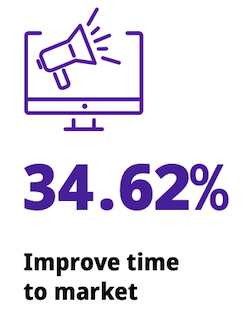 Quando um varejista consegue reduzir o time to market, o negócio é recompensado com mais dias de vendas. Isso é especialmente importante no contexto do e-commerce, onde os clientes que compram online esperam encontrar os produtos e serviços mais novos ao alcance de um clique. E, quando não encontram, é fácil mudar para outro varejista online.
Quando um varejista consegue reduzir o time to market, o negócio é recompensado com mais dias de vendas. Isso é especialmente importante no contexto do e-commerce, onde os clientes que compram online esperam encontrar os produtos e serviços mais novos ao alcance de um clique. E, quando não encontram, é fácil mudar para outro varejista online.
No entanto, ser o primeiro no mercado é apenas metade da equação. O produto ou serviço que você entrega aos seus clientes também é fundamental. Análises de dados precisas – especialmente dados em tempo real – são essenciais para atender (e até superar) as expectativas dos clientes. As empresas podem alcançar até 70% de participação no mercado quando conseguem ser as primeiras a lançar um novo produto.
Melhorar o time to market no varejo está diretamente relacionado a ganhos de eficiência em toda a organização. Cadeias de suprimentos otimizadas, análises de dados em tempo real e integração de e-commerce com aplicações e sistemas adjacentes. A transformação digital no varejo é essencial para esses avanços, e a integração empresarial é a base sobre a qual tudo isso é construído.

Sem um ambiente verdadeiramente conectado, os varejistas não têm insights para entender o que está funcionando, onde melhorias são necessárias – e, mais importante, avaliar em tempo real a qualidade das experiências que oferecem aos clientes.
Relatório sobre o estado da integração empresarial no varejo
O segundo objetivo de integração mais importante para os varejistas é a nuvem e a transformação digital.
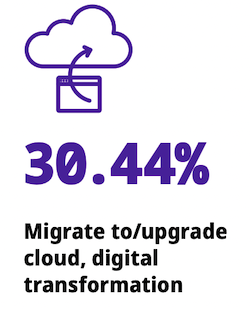 Dada a velocidade da inovação no varejo, esse resultado não é surpreendente. Nos últimos anos, assistimos à adoção rápida de algumas tecnologias incríveis, como compras digitais e personalizadas, checkouts automatizados e melhorias na forma como os sistemas de inventário são gerenciados e otimizados. A transformação digital – e, especialmente, a nuvem – possibilitou todos esses avanços.
Dada a velocidade da inovação no varejo, esse resultado não é surpreendente. Nos últimos anos, assistimos à adoção rápida de algumas tecnologias incríveis, como compras digitais e personalizadas, checkouts automatizados e melhorias na forma como os sistemas de inventário são gerenciados e otimizados. A transformação digital – e, especialmente, a nuvem – possibilitou todos esses avanços.
Hoje, o mercado de nuvem no varejo na América do Norte deve crescer a uma impressionante taxa composta de CAGR de 4.56%, para uma avaliação de $ 109.98 bilhões de dólares de 2023-2030.
Com tantas oportunidades, não é surpresa que empresas estejam aderindo à transformação digital no varejo em números recordes, com a maioria buscando elevar a experiência do cliente (CX) que entregam. Já não é um diferencial; uma CX personalizada e omnichannel é essencial para a maioria dos varejistas.
Para evoluir, os varejistas precisam migrar para uma arquitetura de tecnologia componível, permitindo que se adaptem e adotem rapidamente novas tecnologias conforme necessário, algo inviável com plataformas monolíticas tradicionais.
A integração empresarial conecta o antigo ao novo, unindo todos os diferentes sistemas e aplicações na pilha de tecnologia do varejo, promovendo agilidade e flexibilidade em um setor onde a mudança é constante.
Os varejistas classificaram automação e IA como o terceiro item mais importante em sua lista de objetivos de integração, um desdobramento natural após a implementação de iniciativas de nuvem e transformação digital.
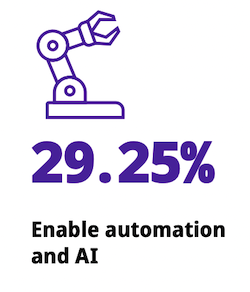 A prioridade dada à IA reflete-se nos números globais do mercado de varejo, onde se espera que o setor alcance aproximadamente 45.74 bilhões de dólares até 2032, com um crescimento anual composto (CAGR) estimado em 18.45% entre 2023 e 2032..
A prioridade dada à IA reflete-se nos números globais do mercado de varejo, onde se espera que o setor alcance aproximadamente 45.74 bilhões de dólares até 2032, com um crescimento anual composto (CAGR) estimado em 18.45% entre 2023 e 2032..
Quando consideramos os volumes de dados gerados pelo comércio eletrônico digital, a IA torna-se indispensável. Com IA, os varejistas conseguem organizar e analisar dados em tempo real de diversas fontes (dados de e-commerce, sistemas ERP de varejo, marketplaces, informações de clientes e concorrentes, entre outros).
Os resultados falam por si só. Insights de dados que possibilitam previsões de demanda incrivelmente precisas para melhorar a gestão de inventário; a detecção de mudanças iniciais nos comportamentos de mercado e consumidores; e, como tudo no varejo se conecta à experiência do cliente (CX), dados em tempo real que otimizam as interações com os clientes.
A IA está ajudando os varejistas a construir sistemas interativos que simplificam a comunicação com o cliente ao longo de toda a jornada de compra. Isso melhora a qualidade da personalização e o engajamento do cliente.
Forbes
O futuro do varejo: quatro maneiras de a indústria utilizar a IA
O acesso em tempo real a históricos de pedidos e perfis de clientes precisos, chatbots de e-commerce, rastreamento de atividades online e em lojas físicas, uma experiência de checkout aprimorada e até o posicionamento de produtos são otimizados com a IA.
A IA também viabiliza a automação, uma capacidade valiosa que oferece benefícios significativos em toda a operação de varejo. Todos os avanços mencionados na seção anterior sobre transformação digital anteriormente dependiam de humanos, resultando em trabalho demorado e frequentemente sujeito a erros. A IA libera os funcionários dessas tarefas repetitivas, aumentando a precisão e a agilidade.
A tecnologia de plataforma de integração como serviço (iPaaS) low-code e nativa em nuvem da Digibee permite conectar todos os pontos (e a infraestrutura de TI) para ajudá-lo a alcançar seus objetivos de transformação digital.
Baixe o relatório Digibee State of Enterprise Integration for Retail e tenha uma visão aprofundada de todos os dados. Entenda como seus pares estão avançando e analise tendências e observações ano a ano para orientar sua estratégia de integração.

Em 2023, a Digibee’s realizou seu segundo evento anual Pesquisa de integração do estado da empresa, alcançando mil CTOs, CIOs, arquitetos de sistema e desenvolvedores da Web na América do Norte.
Nesta série de postagens de blog, examinamos uma das principais descobertas do relatório, classificada por seus colegas. O tempo de implementação se destacou como um dos maiores desafios ao embarcar em uma estratégia de transformação digital de TI. Muitos entrevistados disseram que, embora seu objetivo fosse acelerar a transformação digital, a implementação da integração levou muito mais tempo e foi mais complicada do que o esperado.

Os dados de 2023 chegaram e o segundo relatório anual da Digibee Pesquisa de integração do estado da empresa, está fora! Entramos em contato com mais de mil profissionais de TI corporativos – de desenvolvedores da Web e arquitetos de sistemas a CTOs e CIOs – em toda a América do Norte para entender as tendências, desafios e oportunidades atuais de integração.
Agora estamos mergulhando em algumas das principais descobertas com uma série de postagens de blog – esta enfoca os orçamentos de TI e o custo da integração.

O caminho para a transformação digital nunca é tranquilo, com a maioria das empresas enfrentando uma verdadeira faxina antes de alcançar o estado futuro desejado. Normalmente, os esforços se concentram em sistemas legados e aplicações não nativas da nuvem que dificultam o progresso. Raramente colocamos as APIs nessa categoria.
Por muito tempo vistas como a salvação das equipes de TI ao redor do mundo, as APIs nos ajudaram a simplificar integrações, apoiar a comunicação entre sistemas e liberar aplicações de arquiteturas monolíticas e isoladas. Embora sejam recursos impressionantes (e indispensáveis) para o ambiente empresarial, as APIs também trazem desafios legados próprios.
Para garantir o sucesso da sua estratégia de integração empresarial, a modernização das APIs precisa fazer parte do plano.
>> Agende uma demonstração personalizada com nossa equipe de especialistas e veja como o iPaaS da Digibee trará eficiência ao seu negócio.

Em 2023, a Digibee realizou nosso segundo Pesquisa de integração do estado da empresa, alcançando mil CTOs, CIOs, arquitetos de sistema e desenvolvedores da Web na América do Norte.
Nesta série, examinamos as principais descobertas descobertas no relatório, incluindo o objetivo número um das organizações ao implementar a integração empresarial: migração de nuvem.

Com anfitrião Cait Porte, Diretor de Marketing da Digibee
Neste episódio de “Integração. Redesenhado.”, nosso anfitrião, Diretor de Marketing da Digibee Cait Porte, é acompanhado pelo Diretor de Tecnologia de Campo para a América Latina, Andre Campos, para uma discussão explorando os departamentos de TI. Cait e Andre abordam tópicos que incluem como os departamentos de TI evoluíram, como foram construídos, as percepções atuais em torno deles, os desafios que enfrentam e maneiras de superar esses desafios, a importância da colaboração entre TI e outros departamentos e o papel crucial que esses departamentos podem desempenhar. para entregar valor significativo à sua empresa. Uma percepção em particular discutida é a despesa significativa da TI para as empresas enquanto a TI se esforça para demonstrar o seu valor. Cait e Andre abordam como priorizar os departamentos de TI para impulsionar os esforços de transformação digital pode se tornar uma vantagem competitiva para as empresas.
Mais sobre este assunto
CAIT PORTE:
Bem vindo de volta a mais um episódio. Eu sou Cait Porte, seu anfitrião. E hoje estamos conversando com nosso CTO da Digibee Field para a América Latina, Andre Campos. Bem-vindo, André.
ANDRÉ CAMPOS:
Olá Cait. É bom estar aqui novamente.
CAIT PORTE:
Obrigado por se juntar a nós.
Estou muito entusiasmado com o tema hoje, que é construir um departamento de TI e porque isso é visto como uma despesa tão grande para uma empresa. Acho que conheço a manchete aqui, mas estou muito feliz por ter você para falar sobre isso.
Acho que já falamos várias vezes sobre transformação digital no podcast e acho que continuaremos fazendo isso. Quando pensamos em transformação digital, é um mal necessário, como dizemos, porque temos que fazer isso – equipes e departamentos de TI e toda a tecnologia que temos disponível é relevante – e é caro e normalmente leva mais tempo do que o esperado, criando alguns frustração entre todos que trabalham em qualquer coisa relacionada à transformação digital e tentando limitar a quantidade de frustração multifuncional que acontece. Certo?
Rodrigo falou sobre como os departamentos de TI perderam um pouco de credibilidade mesmo sendo tão cruciais, agora mais do que nunca. Então, por que isso acontece em algumas empresas? Pela sua experiência e vida passada, o que você está vendo? Por que estamos vendo tanto atrito entre o mal necessário de obtê-los e onde há despesas?
ANDRÉ CAMPOS:
Acho que estamos num período de mudança. Se você voltar na história há 20 anos e pensar na história de 20 anos não é assim. Naquela época, a TI era responsável por dar suporte aos negócios e manter tudo funcionando. E cada novo projeto levava muito tempo e era difícil de implementar. Tudo era manual e era difícil atender às expectativas do negócio por causa da falta de tecnologia, da falta de entendimento. Não havia muitos parceiros para trabalharem juntos para entregar o que era esperado. E acho que a combinação de tudo criou a má reputação da TI e tem sido difícil mudar isso ao longo dos anos. Está mudando, mas estamos no meio dessa mudança.
CAIT PORTE:
Adoro isso e acho que estamos tentando mudar a maré, certo? E estamos tentando mudar essa perspectiva ou percepção da TI.
Quando pensamos sobre onde estamos, qual você vê como talvez o principal desafio que os departamentos de TI enfrentam ao tentar obter o suporte que precisam fornecer?
ANDRÉ CAMPOS:
Acho que temos que lembrar sempre que a transformação não tem a ver com tecnologia, tem a ver com pessoas. Não se trata de como a tecnologia pensará, mudará tudo, mas de como as pessoas usarão a tecnologia para mudar tudo. Eu sei que não é tão forte, mas é diferente. Então, como você vai usar a tecnologia certa, os parceiros certos, para ajudar as pessoas a mudarem seu trabalho diário? Ou ajudar as pessoas a mudarem o relacionamento que têm com seus clientes ou com os demais negócios que são parceiros? Então lidar com isso, pensar na necessidade do negócio como o centro de tudo é fundamental para mudar e acelerar a transformação digital.
CAIT PORTE:
Concordo com o fato de ter sido alvo da transformação digital no passado. Mas, para uma empresa que não vê a TI como um departamento padrão, basta dizer “sim, precisamos disso, porque…” Quando um negócio não é construído com base na tecnologia, como as empresas, na sua opinião, abordam tecnologia, transformação digital, pensando que é uma vantagem competitiva e não apenas mais uma despesa?
ANDRÉ CAMPOS:
Acho que é uma questão de seleção natural. Todas as empresas que – bem, estamos no momento em que estamos tendo mudanças no comportamento dos clientes, na relação entre empresas – então há muitas coisas que precisam ser mudadas. Então, se a empresa não encarar isso como algo que tornará o negócio melhor, mais performático para corresponder às expectativas dos clientes, será algo que os deixará para trás dos demais. Eles não querem criar um diferencial, serão apenas mais uma empresa e o cliente com certeza escolherá outro fornecedor. Então, é fundamental iniciar essa transformação.
CAIT PORTE:
Comentário interessante aí. E acho que muitas empresas enfrentam, são as pessoas, é a tecnologia? É uma mudança de mentalidade que estamos avançando? E o que afetará os resultados financeiros? Então, quando você olha para essas coisas – quero dizer, você já mencionou pessoas, você já mencionou que não pode simplesmente obter tecnologia – o que você daria como recomendação para outras equipes dizerem ei, vamos fazer com que ela tenha o melhor desempenho ? E, para entregar o máximo para a empresa?
ANDRÉ CAMPOS:
Acho que essa evolução, essa mudança está acontecendo agora. E acho que isso está acontecendo em muitas dimensões diferentes. Temos mais tecnologia disponível, então é mais fácil e rápido encontrar plataformas que possam ajudar nesse processo, encontrar bons parceiros, ajudar esses parceiros. Acho que nós, você e eu, estamos imersos em muita tecnologia. Temos smartphones, vemos Netflix e streaming e tudo mais. Podemos ter tudo mais rápido. Então, agora sabemos como a tecnologia pode nos ajudar em nossas vidas. E acho que por causa das mudanças e da necessidade de atender às expectativas dos clientes para mudar a forma como nos relacionamos com outros negócios, essa pressão está fazendo com que o negócio e os departamentos de TI trabalhem melhor juntos. Portanto, tem sido mais fácil trazer a TI do “departamento executor” para um “departamento estratégico”. Este é o momento certo para fazer isso.
E acho que a pandemia acelerou isso. Colocando TI agora por causa das restrições que tínhamos. A TI foi a parte mais importante para permitir que o negócio continuasse funcionando. E acho que conhecer melhor os negócios, ter negócios e tecnologia trabalhando juntos, essa é a mudança mais importante para passar pela transformação digital.
CAIT PORTE:
Eu estava pensando sobre isso antes. Em vidas passadas trabalhei na área de produto, e com muito sucesso – e sei que você tem formação e experiência como CIO, certo? Presumo que você concordaria com isso – no sentido de que o maior sucesso que tivemos foi quando, como equipe de produto, apresentamos uma perspectiva de negócios ao departamento de TI para dizer: “ei, este é o desafio estamos tentando resolver. Ajude-nos a descobrir como fazer isso.” Em vez de muito prescritivamente, “aqui está a solução, vá fazer isso”. E acho que sempre foi assim. Mas certamente há mais sucesso quando realmente envolvemos a TI desde o início na solução de um problema e na utilização desse conjunto de habilidades.
ANDRÉ CAMPOS:
Exatamente. Sim, é isso. Do meu ponto de vista, a TI é o agente de mudança mais importante. Conhecendo melhor o negócio e conhecendo a tecnologia. E o mais importante que isso, saber aplicar a tecnologia em benefício do negócio. Então ter a TI envolvida desde o início, aplicando a tecnologia certa, tendo os parceiros certos. Isso é muito importante para ter um processo de sucesso.
CAIT PORTE:
Absolutamente. Bem, obrigado, Andre, por se juntar a nós hoje. É sempre um prazer ter você. Adoro ouvir a experiência sobre como podemos fazer com que as equipes de TI tenham uma boa aparência novamente, certo? E entregue esse valor.
Então, obrigado por se juntar a nós.
ANDRÉ CAMPOS:
Muito obrigado. Foi um prazer.
X